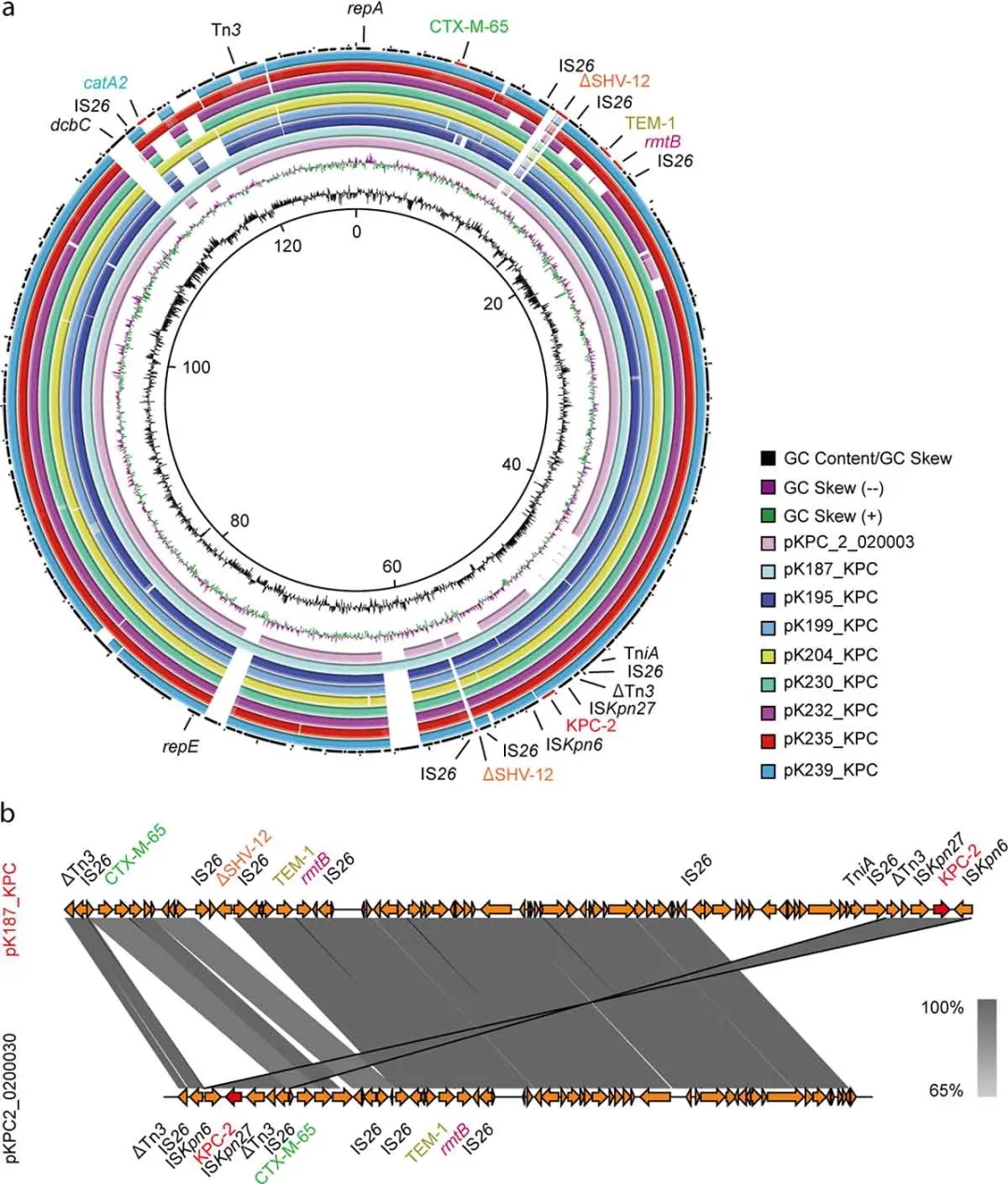Abstract
The co-occurrence of hypervirulence and KPC-2 carbapenem resistant phenotypes in a highly-transmissible ST11 clone of Klebsiella pneumoniae has elicited deep concerns from public health stand point. To address this problem, we conducted a large-scale epidemiological, clinical and genomic study of K. pneumonia ST11 clones with both hypervirulence and carbapenem resistance in two tertiary hospitals in Zhejiang Province. Most of the patients (15/23) were diagnosed with exclusively carbapenem-resistant K. pneumoniae (CRKP) infections. Ten death cases were reported, some of which are due to failure to respond to antibiotic therapies. As a result, we identified one new rare sequence types (ST449) to KPC-2-producing CRKP, in addition to the dominant ST11. These clinical isolates of K. pneumoniae are multi-drug resistant and possess a number of virulence factors. Experimental infections of wax moth larvae revealed the presence of hypervirulence at varied level, suggesting the complexity in bacterial virulence factors. However, plasmid curing assays further suggested that the rmpA2-virulence plasmid is associated with, but not sufficient for neither phenotypic hypermucoviscosity nor virulence of K. pneumoniae. Intriguingly, all the rmpA2 genes were found to be inactive due to genetic deletion. In total, we reported 21 complete plasmid sequences comprising 13 rmpA2-positive virulence plasmids and 8 bla KPC-2-harboring resistance plasmids. In addition to the prevalent pLVKP-like virulence plasmid variants (~178kb), we found an unexpected diversity among KPC-2-producing plasmids whose dominant form is IncFII-IncR type (~120kb), rather than the previously anticipated version of ~170kb. These findings provide an updated snapshot of convergence of hypervirulence and carbapenem resistance in ST11 K. pneumoniae.











